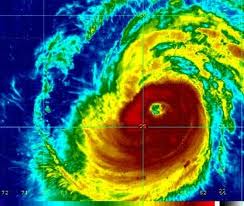How To Track A Hurricane
Hurricanes, often called ‘the deadliest storms on earth,’ used to be even deadlier because know one knew how to track a hurricane with as much accuracy as we have today. Before weather satellites like Tiros were used to track hurricanes and other weather phenomena, local coastal radar, and the stories of islands or coastal areas already hit by a storm were used to warn residents of an approaching hurricane.
Fortunately for us, hurricane tracking is much easier in the 21st century. Modern weather satellites and doplar radar provide us with an ability to track hurricanes that would seem almost magical to people even 75 years ago. The world has changed, and hurricane tracking has changed with it. Below, we will show you how to track a hurricane in a four simple steps.
- Before you begin, be sure to have a hurricane checklist available to ensure that you will have everything you need for 3 days after a hurricane hits.
- If you have a smartphone, be sure to download a hurricane tracker app. This article, written during Hurricane Irene has a list of resources where these types of apps are available. These will give you up to date information about an approaching hurricane if you’re not close to a television or computer screen.
- Check National-Hurricane-Center’s hurricane tracker page to get a look at where current Atlantic Ocean and Gulf of Mexico Hurricanes are headed.
- Grab a hurricane tracking map like this one and pay close attention to updated coordinates given either online, or during a news cast. Actively tracking the storm yourself will help you get into the hurricane preparedness habit.
Knowing how to track a hurricane is an important element of hurricane preparedness. Understanding where the storm is and how much of a risk it poses to you and your family will help you to avoid making some serious hurricane missteps and keep you and yours out of harms way.


Recent Comments